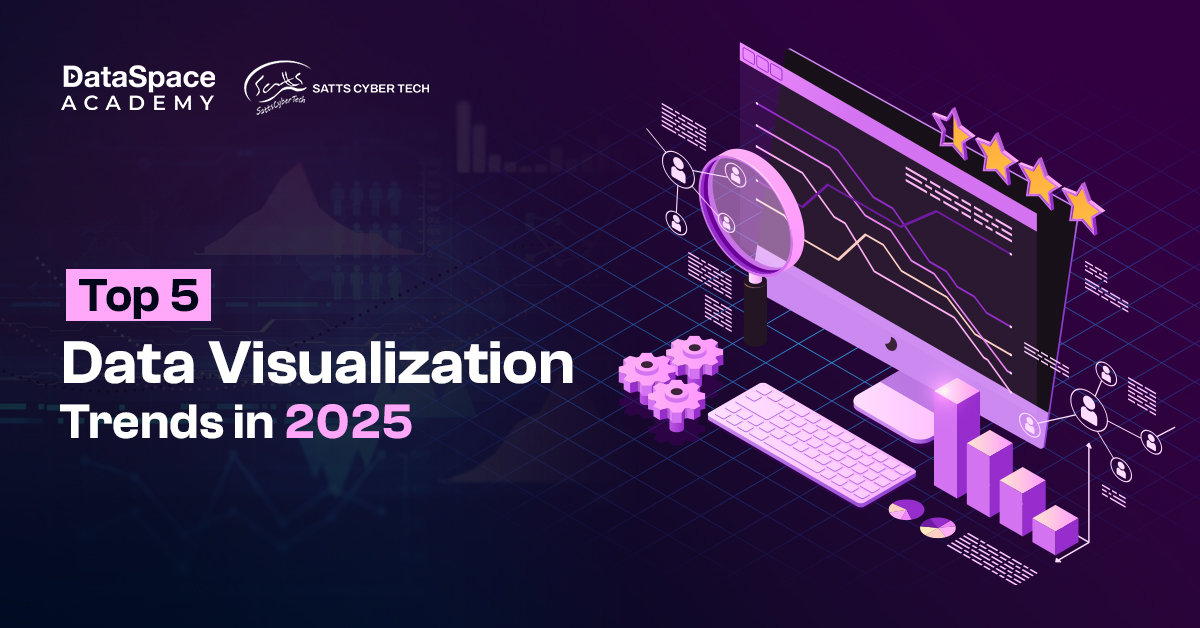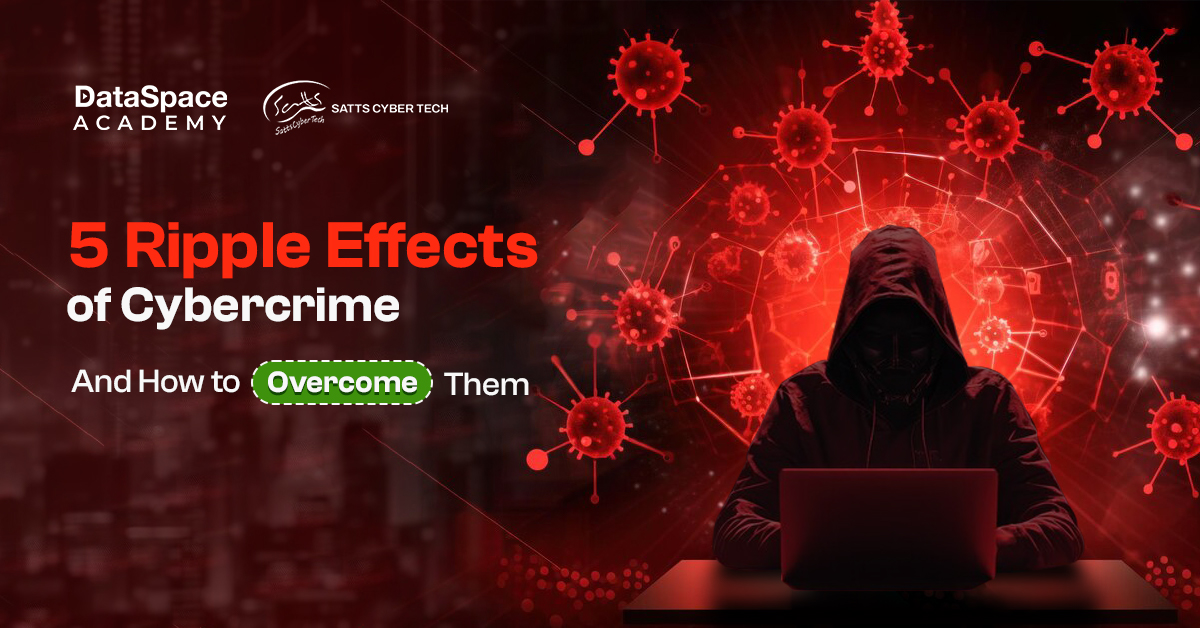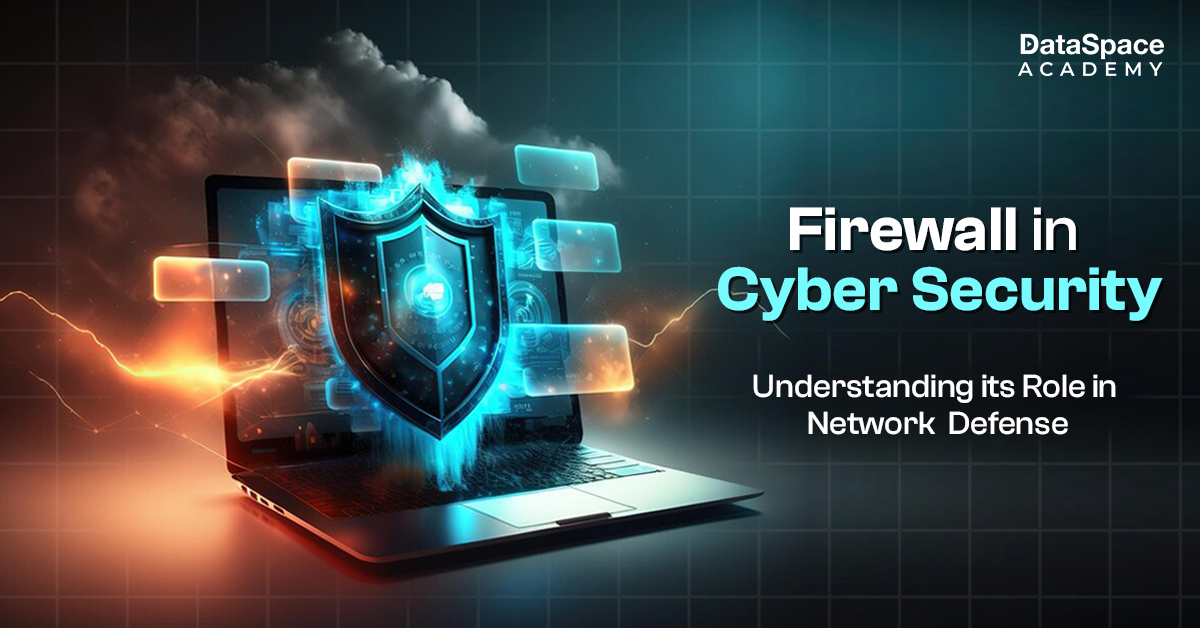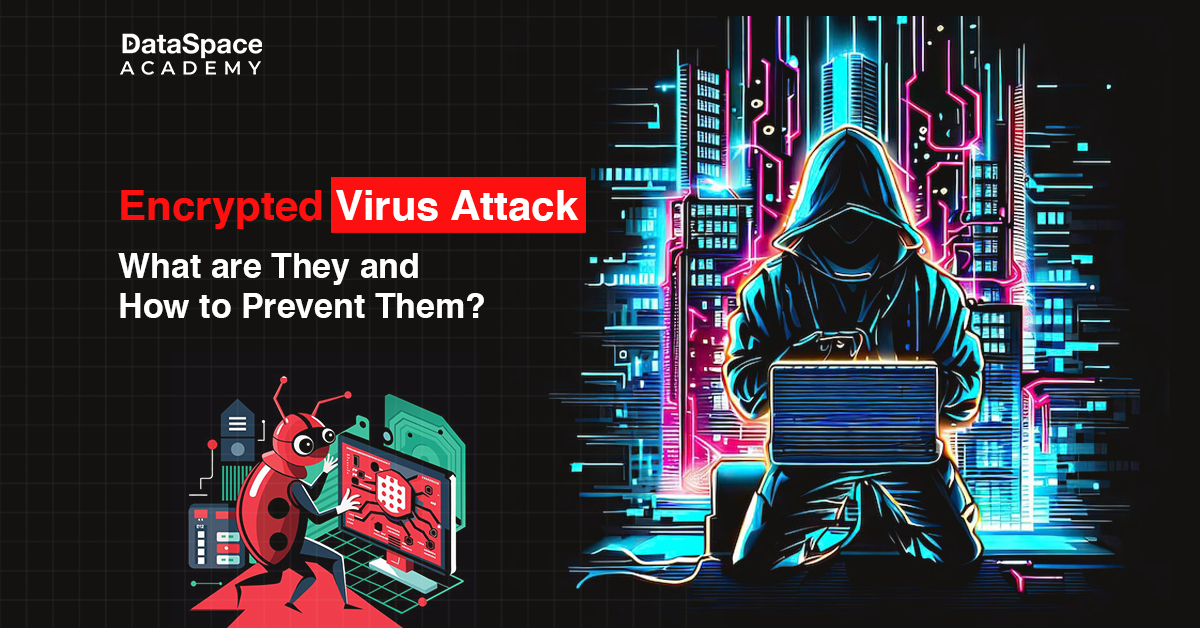History and Impact of Ransomware Attack: A Comprehensive Read
Last Updated : 21 Nov, 2024
 60.87K
60.87K
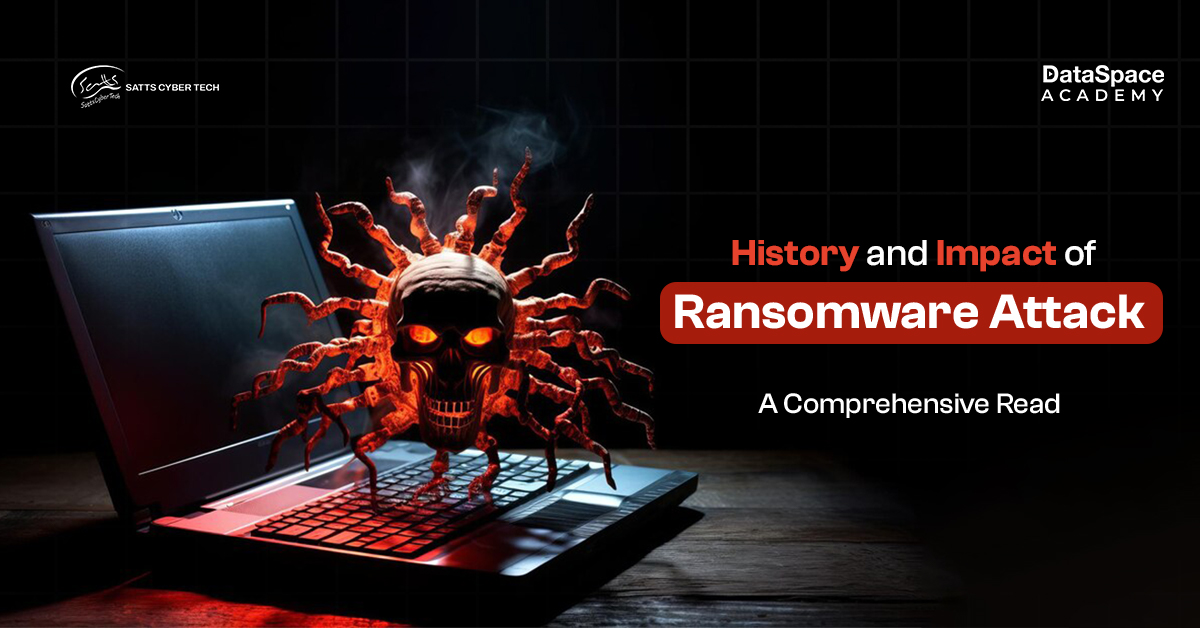
Introduction
While the digital-first era accelerates industrial growth and innovation, persistent cyber threats, especially the menacing impact of ransomware attack casts a cautionary shadow.
Ransomware activity has risen by 13% since 2019, with 2024 seeing average ransom demands hitting $2.73 million. This alarming surge in ransom demands marks a $1 million uptick from the previous year.
The inception of ransomware can be traced back to 1989, a time when floppy disks represented cutting-edge technology, and the ransom demand was just $189. Since then ransomware threats have dangerously evolved – significantly affecting the cybersecurity domain and data-driven industries like banking, and healthcare. Let’s unravel the dark realm of ransomware as we walk you through its revolutionary evolution and the rippling effect of the ransomware virus haunting global industries.
What is Ransomware and how does it work?
Ransomware is a type of malware that has evolved over decades, becoming one of the most disruptive cyber threats today. Its origin traces back to the late 1980s when the AIDS Trojan demanded ransom via floppy disk at the AIDS conference of the World Health Organisation. Fast forward, modern ransomware attacks are way more sophisticated, leveraging encryption to lock critical data and demanding payment in cryptocurrency.
Ransomware evolution has come a long way into becoming exponentially sophisticated, targeting individuals, corporations, and even governments- causing devastating financial and operational impacts. With the rise of Ransomware-as-a-Service and global connectivity, the need for robust cybersecurity defenses has never been more urgent.
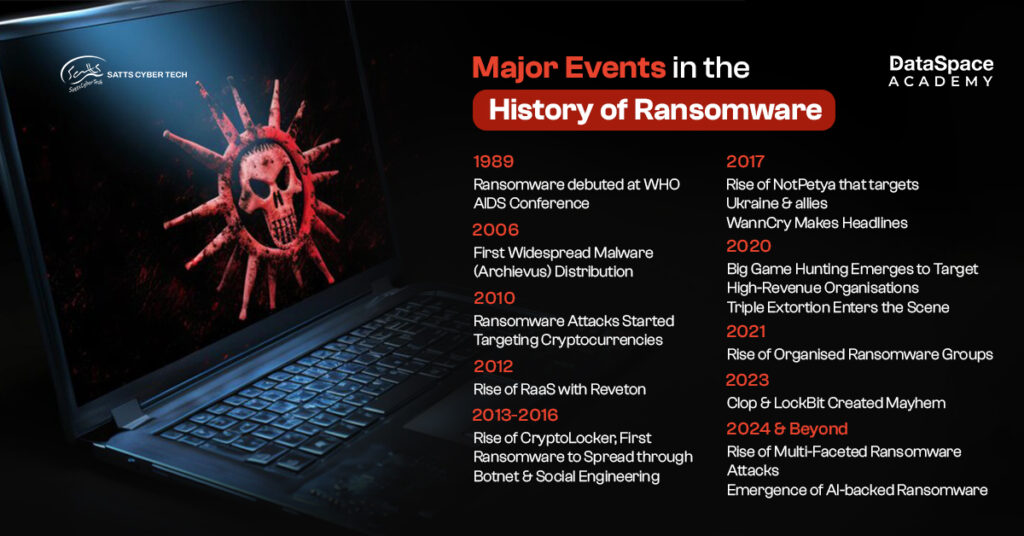
History and Evolution of Ransomware
With ransomware scares claiming headlines, you must be wondering how this most-talked cyber threat debuted and evolved to become the nightmare of today’s industries. So buckle up for an insightful read on the past, present, and future of ransomware evolution.
Budding time (1989-2010):
The first ransomware incident debuted in the cybercrime scene in the late 1980s with a Trojan virus at the AIDS conference hosted by the World Health Organisation (WHO). Delivered through a floppy disk, the virus greeted the conference with a locked screen! There were attempts to reboot and each time the disk kept count of the reboot. After 90 such attempts, the malware encrypted the files to demand ransom for the key.
However, the virus was not capable enough for widespread execution. Two major reasons were the lack of interconnected technology and the limited feasibility of the threat actors in obtaining funds.
Cut to 2006, the first strain of advanced ransomware and malware, Archievus, arrived at the ransomware scene. Backed by tough-to-crack asymmetric encryption, this was the first widespread malware distribution that spread through spam emails and harmful websites. However, its flawed design (single decryption key) led to its short existence.
Mainstream debut (2010-2016):
Let’s unfold the rapid evolution of ransomware during this time:
2010: The crypto wave soon caught attention of the scammers. The decentralised nature of cryptocurrencies enables threat actors to disguise transactions easily, making threat detection critical. Given its ability to transfer money instantly (irrespective of the volume), Bitcoin has become the primary currency of ransomware attacks.
2012: The year 2012 saw the rise of ransomware-as-a-service (RaaS) through Reveton, a malware that posed as local police, intimidating victims with fake legal threats. Reveton operators sold this software-as-a-service, laying the groundwork for the widespread adoption of the RaaS model.
2013-2016: 2013 witnessed the rise of CryptoLocker, the first of its kind to spread through botnet and social engineering. This widespread cyber viral infection spread through email attachments- the alleged group behind this malicious game reportedly made 20 million USD in Bitcoin.
Peak ransomware rampage (2016-2023)
In 2016, Petya emerged as a groundbreaking variant of ransomware. It targeted the master boot record and encrypted the master file table to lock victims out of their entire hard drives. The following year, its variant, NotPetya, targeted Ukraine and its allies. Around the same time, WannaCry made headlines, exploiting a Microsoft vulnerability called EternalBlue to infect devices worldwide.
By 2018, ransomware like GrandCrab integrated data theft, stealing credentials, files, and more. In 2019, dark web sites began exposing stolen data, compounding victim losses to newer heights.
Fast-forward to 2020, and “Big Game Hunting” began targeting high-revenue organisations, especially those with minimal tolerance for downtime, like healthcare and manufacturing. During this time, triple extortion also made to the scene, combining ransomware, data leaks, and additional threats like DDoS attacks.
By 2021, initial access brokers (IABs) became the threat of the hour, selling access to networks and fueling Ransomware-as-a-Service (RaaS). These developments made way for the rise of organised ransomware groups.
Decoding the future from present (2023- now):
Ransomware in 2023 caused widespread damage, targeting healthcare, finance, and infrastructure sectors globally. High-profile attacks like Clop’s MOVEit breach and LockBit’s strikes highlighted evolving tactics, such as exploiting zero-day vulnerabilities.
Considering the current trend and advent of innovation, future threats may involve AI-enhanced ransomware, faster deployment techniques, and greater focus on critical systems. As cyber criminals adapt, robust security measures and proactive threat intelligence will remain essential to mitigate risks.
Effects of ransomware attack
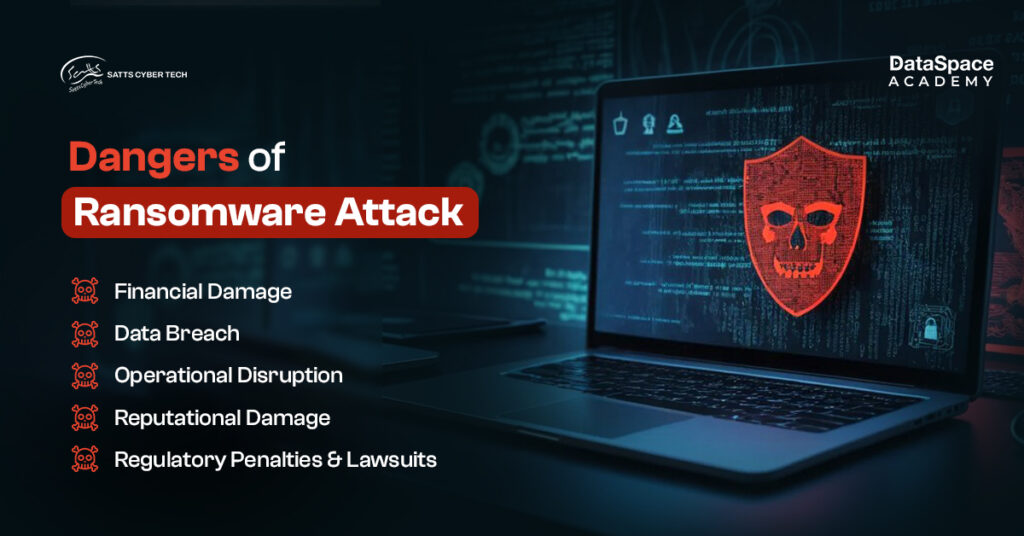
- Financial Loss: Victims often face hefty ransom demands, operational downtime, and costs for recovery efforts, totaling millions in damages.
- Data Breach Risks: Sensitive personal or corporate data can be stolen, sold, or leaked, leading to legal consequences and loss of trust.
- Operational Disruption: Systems and workflows may be paralyzed, halting business operations, supply chains, or essential services for extended periods.
- Reputation Damage: Affected organisations risk losing customer confidence, investor support, and their market position due to negative publicity.
- Legal Consequences: Failure to protect data can result in regulatory penalties and lawsuits, especially under strict data protection laws like GDPR or HIPAA.
Ransomware in 2025
With 2025 just around the corner, here we compile a list of next-gen ransomware trends to disrupt the business landscape, such as:
- Quantum-proof ransomware
- AI-powered ransomware
- Supply chain attacks
- Blockchain-based threats
Conclusion
The rise and devastating impact of ransomware attack is nowhere to stop. Rather the advent of AI-powered innovations will further escalate the complexities and consequences of ransomware infestation- unfolding a difficult new chapter. These grim times call for highly skilled cybersecurity professionals who would be able to defend organisations against these menacing intrusions. If you are aspiring to build a robust career in cybersecurity, get job-ready with DataSpace Academy’s industry-leading cybersecurity courses online.
 60.87K
60.87K



